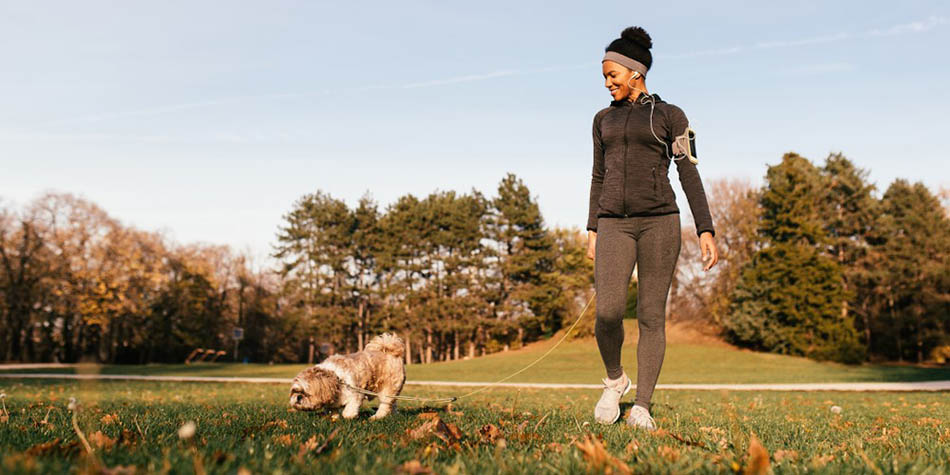
By walking for as little as two minutes after eating, you can experience health benefits like more regulated blood sugar.
Walking is a low-impact exercise that's easy on your joints and can be done just about anywhere. But, did you know there are specific benefits of walking after eating? That's right — a stroll around the block after a meal can be a health boost. Just two minutes of walking after eating can help lower your blood sugar, improve your digestion and more.
Here are five benefits of walking after eating. Some of them may surprise you.
1. Regulate blood sugar
Walking after eating may help regulate your blood sugar. A study in Sports Medicine found that when people went for a light walk after eating, their blood sugar levels rose and fell more gradually than if they stood up or continued sitting. Participants' insulin levels also remained more stable during walking than with standing or sitting.
You don't need to take a long walk to reap the benefits — two to five minutes should do the trick. It's also best to start walking as soon as possible after finishing a meal since blood sugar levels tend to spike between 60 and 90 minutes after eating. Although you can choose to walk after any (or every) meal, many people tend to be less active after dinner, making it a good time to take a quick stroll.
2. Improve digestion
Walking after eating can aid in digestion. A study in PLOS One found that walking stimulates the stomach and intestines. This can help food move through the digestive system more rapidly. It can also help reduce bloating, especially for those with irritable bowel syndrome. Bloating occurs when gas builds up in the digestive tract as undigested food is broken down. Bloating also occurs when you swallow air as you eat or drink. Physical activity, such as walking, can help move some of that excess gas through the digestive tract.
3. Lower blood pressure
Walking after meals can also help lower blood pressure. Hypertension is one of the leading causes of heart disease and stroke, so it's important to find ways to reduce high blood pressure. A study in the Journal of Family Medicine and Primary Care found taking three 10-minute walks every day can help reduce diastolic blood pressure in people with prehypertension. Mealtimes can serve as a convenient trigger for these short walks. Additional research has shown that for adults with high blood pressure, walking was effective in reducing systolic and diastolic blood pressure. Those with more severe hypertension saw more significant reductions.
4. Burn calories
Walking after eating can help with weight loss. Traditional weight loss plans say you need to burn 3,500 calories to lose a pound of fat. Put another way, you'd need to create a caloric deficit of 500 calories per day, seven days a week to lose 1 pound. However, this formula is more of a guideline than a hard-and-fast rule. But if you want to use it as the basis for weight loss, one way to help create that deficit is by taking a walk immediately after mealtimes. Walking can boost your metabolism, helping you burn more calories from fat.
On average, a person who weighs 150 pounds will burn about 100 calories per mile walking at a mild pace. Walking longer or faster can increase that number. The average person takes about 20 minutes to walk a mile, so a 30-minute walk after a meal at a mild pace could help you burn up to 150 calories, if not more.
5. Elevate your mood
Walking after a meal can improve your mood. Exercise helps reduce the levels of stress hormones, such as cortisol, in the body. It also increases positive hormones like endorphins and oxytocin (also known as the love hormone). These hormones not only help you feel good, but they also help you fall asleep faster and stay asleep longer.
Keep in mind that walking after a meal doesn't have to be all or nothing. If you can only manage a couple of minutes in the beginning, that's better than not walking at all. It can also be as simple as parking farther away from the entrance if you go out for lunch or taking the stairs instead of the elevator on the way back to your desk. If you work from home, try taking a short lunchtime walk between meetings. What matters most is getting into the habit of walking after mealtimes and creating consistency within your routine whenever possible.
$webqFacilityNumber
Need a Physician?